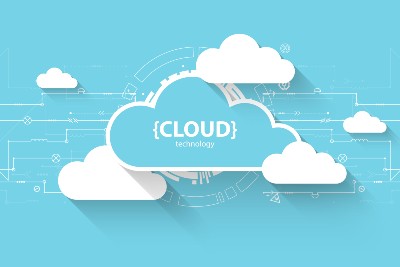
The term SaaS is related to cloud computing. This method of software delivery is a good alternative to traditional on-premise solutions.
In this article, we will cover the main idea of software-as-a-service and show its popular examples as well as its advantages and downsides.
In a nutshell, SaaS is a licensing model that allows customers to access a software product from any device with a web browser and an Internet connection. This approach helps companies save money since they no longer have to invest in expensive hardware. So, that is no wonder that many founders want to build a SaaS solution for their businesses.
According to a Gartner forecast, SaaS remains the largest market segment and will reach over $140,000 dollars in 2022.
Most people use SaaS services without even realizing it. For example, it is now difficult to meet a person who does not have email, and email is the simplest example of software as a service.
Google, Microsoft, Adobe, Wix, StaffCounter, Canva – the list is endless. Software as a service has reached a new level and is gradually becoming one of the most popular areas in software development and service delivery.
The SaaS market is expanding and attracting more and more entrepreneurs every year. And, no less important, the market attracts customers by providing them with simple, convenient, and always available applications and services that are accessible from anywhere in the world with a login and password.
Also, an important factor in this scheme of work is that the company does not need to purchase expensive server equipment, keep individual IT specialists and programmers on staff to maintain and support specialized programs.
According to Computer World’s data, companies that switch to subscription-based programs are cutting IT expenditures by more than 15 percent.
The examples of the most popular SaaS products
- Dropbox
- Figma
- Slack
- GitHub
- Trello
- MailChimp
- G Suite
- Amazon Web Services
- Zendesk
- HubSpot
- Adobe
- Wix
- Evernote
- Canva
The advantages of the software-as-a-service model
Here are the main benefits when working with SaaS platforms. This list can help an entrepreneur to choose the software model for running their business.
1. Fast setup and deployment
Companies no longer need to install apps on their computers. The software is already installed and hosted in a vendor’s cloud environment. Thus, the deployment process becomes much shorter in comparison with the traditional software delivery models.
2. New releases
SaaS providers often launch upgrades and new releases and make them available for their customers. The costs of these updates are much lower in contrast with in-house software since businesses don’t have to buy and install additional upgrade packages or pay for specialized services to get the latest version of the solution.
3. Scalability
There are many subscription models offered by SaaS vendors. You can easily change the current model when it is necessary, for example, when your business scales and more users need to access the solution. However, in some cases, you may need to pay for the additional computing capacity such as bandwidth or data storage.
4. Data security
When companies opt for the software-as-a-service model, their primary concern is the protection of their confidential information. Reliable SaaS vendors know that and provide their customers with robust security measures. They perform penetration tests to identify any vulnerabilities in the system, offer data encryption, audit trails, and a system of roles and permissions.
5. Less cost
With cloud technologies, entrepreneurs don’t have to maintain or patch vulnerabilities in the software they use. SaaS solutions can be deployed over many regions and company’s branches in a short time. As the infrastructure is on the SaaS provider, a business owner doesn’t need to spend hours on ensuring availability and security.
6. Ease of self-training
Most SaaS products include training material. Users get help from videos, tutorials, and help desk offered by SaaS providers. With such ease, the SaaS platform easily incorporates in the company’s workflow.
7. Maintenance is on the provider’s side
Many subscribers that use a SaaS platform submit complaints and suggestions on how to improve it. So, developers already checked the feedback and made the needed configurations. They maintain the software regularly, which enables customers to focus on business processes.
The SaaS model is getting increasingly popular because cloud solutions are easy to implement, upgrade and debug. All popular email clients, Google applications, including Google Docs, online games, and even ATMs – all these are vivid examples of Software as a service, which quickly and thoroughly entered our daily activities.
With SaaS, service providers take over security, availability, and performance, which means these systems are the most efficient and secure business solutions for today.
However, you should evaluate its downsides as well to make the right decision.
The disadvantages of the SaaS model
1. Limited control
If you choose a locally implemented solution, you get full control over your application. That is not the case for the software hosted in the cloud which is controlled by the vendor. It means that you cannot change existing functionality or add some specific options.
2. A small range of applications
SaaS is gaining momentum, however, there are still a lot of popular solutions that don’t have a cloud-based platform. Besides, there might be issues with integrating hosted tools with the in-house products currently used in your company.
3. Dependence on the stable Internet connection
Since SaaS solutions are accessed via a web browser, a stable Internet connection is a must. Otherwise, your team won’t be able to access the software.
Conclusion
As you can see, software-as-a-service has both benefits and drawbacks. It doesn’t require purchasing expensive hardware and can be easily upgraded without any effort on your part.
At the same time, in some cases, it cannot be integrated with your existing tools and applications.
Also, SaaS doesn’t work for all businesses. The choice of software deployment models depends on your business types and specific needs you are trying to solve with the help of certain applications and tools.
Story by Dmitry Chekalin, CEO @ Codica, software entrepreneur with 15+ years of experience.










